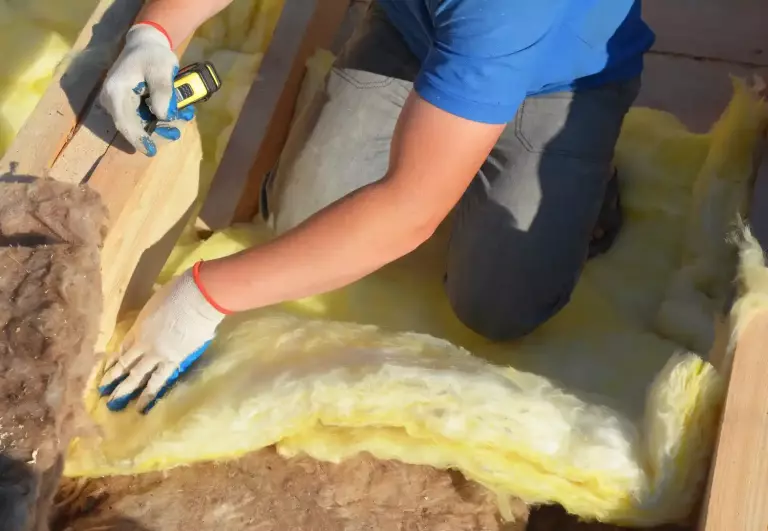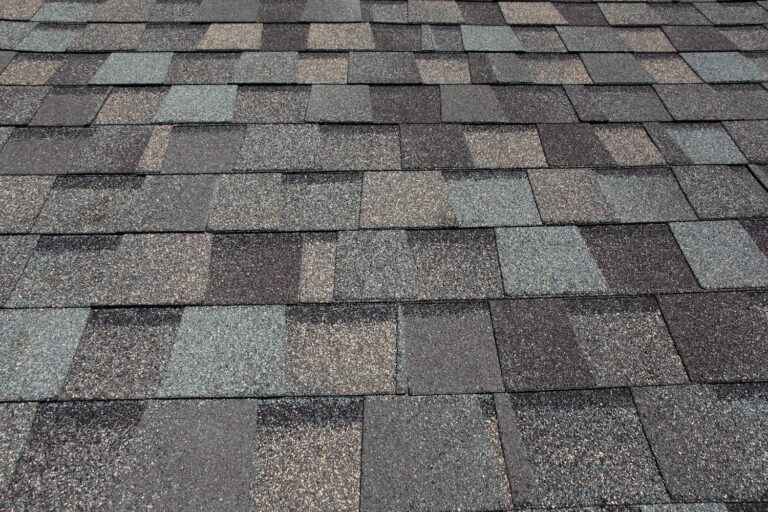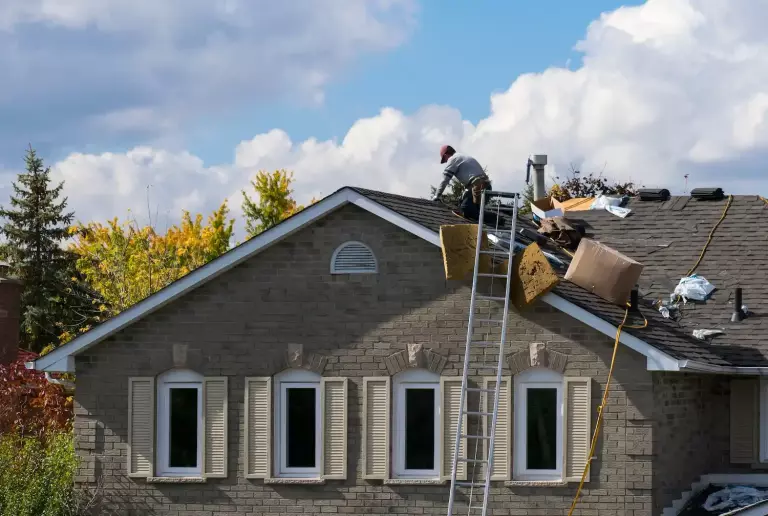If you’re like most homeowners, you don’t spend much time thinking about your home’s roof until you notice a tell-tale spot of discoloration growing across your attic floor or hear suspicious dripping every time it rains.
HOW MANY LAYERS DOES A ROOF STRUCTURE HAVE?
Your roof is made up of much more than shingles and sheet metal. Each component is designed to increase your home’s water resistance, insulate against extreme temperatures, and keep your family safe from the elements.
A modern roofing system consists of nine layers:
- Framing
- Insulation
- Roof decking
- Flashing and drip edge
- Ice and water barrier
- Underlayment
- Starter strip
- Roof Covering (asphalt shingles for sloped roofs/MBR or rubber for flat roofs)
- Ridge vents
Read on to learn more about these roof layers, including their purpose, the different materials they’re made from, and how they keep your home safe from the elements.
FRAMING
While it’s not necessarily a part of the roof, the framing in your attic provides an extra layer of support for the roof deck.
Depending on the weight of the roofing materials you choose, these trusses can vary in width and spacing.
INSULATION

Without fiberglass insulation installed into your attic floor and between the framing trusses, your air conditioning would have to work overtime to regulate the temperatures inside of your home.
It also keeps things comfortable in the winter by stopping hot air from escaping through your roof and preventing ice dams from building up around the eaves.
ROOF DECKING
The first layer is the roof deck or sheathing, constructed from plywood or oriented strand board (OSB). It provides the foundation for the rest of the layers, ensuring the roof stays sturdy and evenly distributed weight.
When installing a new roof decking, contractors attach it directly to the attic framing.
FLASHING AND DRIP EDGE
Roof flashing is galvanized steel plates installed underneath the shingles to keep water from penetrating vertical cracks around edges, valleys, vents, skylights, and chimneys.
One of the essential pieces of flashing is the drip edge, which is installed along the edge of the decking to drain water away from your roof and prevent it from compromising the integrity of the different layers.
ICE AND WATER BARRIER
Next comes the ice and water shield, a self-adhesive, watertight seal that stops wind-driven rain from reaching the rot-susceptible wooden decking.
The peel-and-stick waterproof membrane attaches directly to the roof deck in areas more prone to damage from water intrusion and snow buildup, including valleys, rakes, and eaves. They are also vital on low-pitch or flat roofs.
While they are not always a legally-mandated roof layer, be sure to check your local building codes. Some areas, particularly those that get a lot of snow, require them for all new roof and replacement roof installations.
UNDERLAYMENT
Next comes the roof underlayment, a felt or fiberglass water-resistant barrier that allows your home to be adequately ventilated by allowing moist air and heat to escape through the attic without letting rain drip into the decking.
Underlayment should cover the entire roof deck to be an effective water shield. Otherwise, you risk serious water infiltration issues, including rot, mold, and leaks.
STARTER STRIP
The next roof layer is the starter strip, which consists of specialized shingles that prevent strong winds from uplifting the regular shingles.
They also help keep wind-driven rain from getting underneath the roof’s edges.
ROOF COVERING
When most homeowners think about roofing materials, their mind immediately goes to the most visible layer: the roof covering.
While there are many different materials you can choose from, we’ll focus on a few of the most common options for family homes: asphalt shingles, architectural shingles, MBR, and rubber.
ASPHALT SHINGLES FOR A SLOPED ROOF
Standard, 3-tab asphalt roofing shingles are the most popular roofing material for a sloped roof. They are relatively inexpensive and lay flush against the inner layers.
If you’re willing to invest in the aesthetics of your roof, architectural shingles are an excellent option. While they have the same basic construction as asphalt shingles, the additional ceramic and mineral coating adds a multidimensional color similar to traditional cedar shakes.
MBR OR RUBBER FOR A FLAT ROOF
If you have a flat roof, you’ll require a different roofing material for the final layer of protection. In modern homes, this is typically a modified bitumen roof or rubber.
Modern MBR comes in peel-and-stick polymer sheets studded with fiberglass bits. It’s an excellent water barrier and fire-retardant roofing material.
Alternatively, a flat roof system might use ethylene propylene diene monomer (EPDM), a single-ply membrane attached with metal fasteners. It’s lightweight, DIY-friendly, and easy to patch should a leak spring up.
RIDGE VENTS
To cap everything off, the peak of your roof comes equipped with a ridge vent or ridge cap. This piece allows hot, moist air to escape from your attic. Not only does this help keep your home consistently cooler, but it also stops trapped moisture from causing mold and mildew.
Some homes also have static vents that allow heat to escape even more easily, but you’ll need to keep an eye out for leaks where the two edges of the roof and the vent meet.
Heavy rain can sometimes enter through the cracks, especially if your roof lacks water barriers around the external ventilation systems.
WRAPPING UP
Improper roof installation, roof replacement, or low-quality roofing materials can seriously damage your home, from the attic to the foundation.
However, wear and tear damage in the different layers can also become a more significant issue if you don’t follow a regular maintenance schedule.
The best way to understand the scope of repairs for an existing roof is to let a roofing contractor inspect it. They’ll be able to diagnose your issues, identify which layers need help, and quote you a price for your next roofing project.



